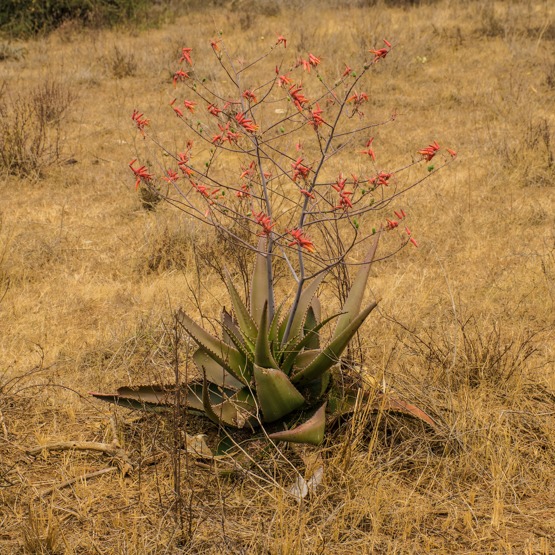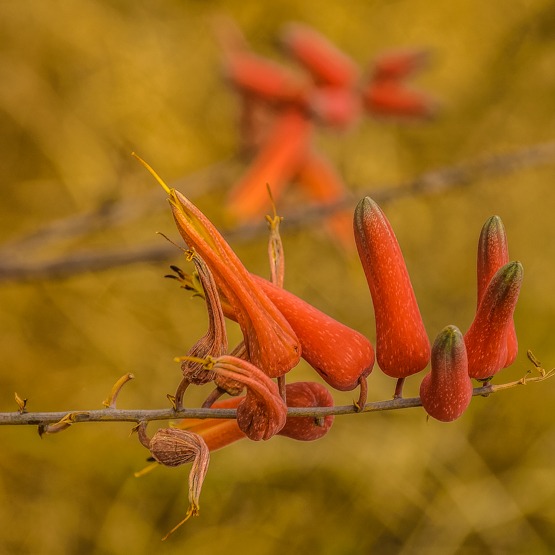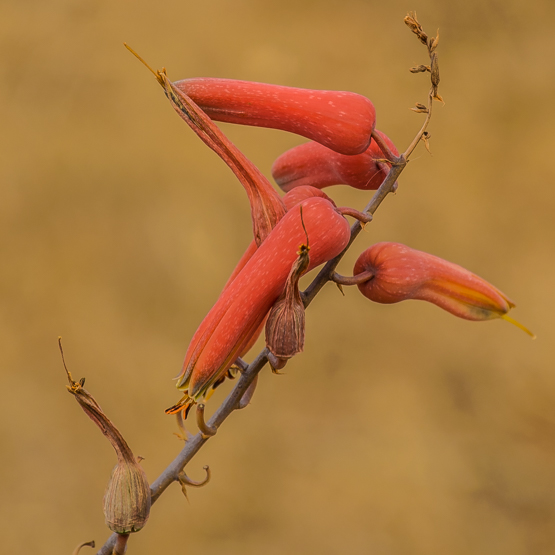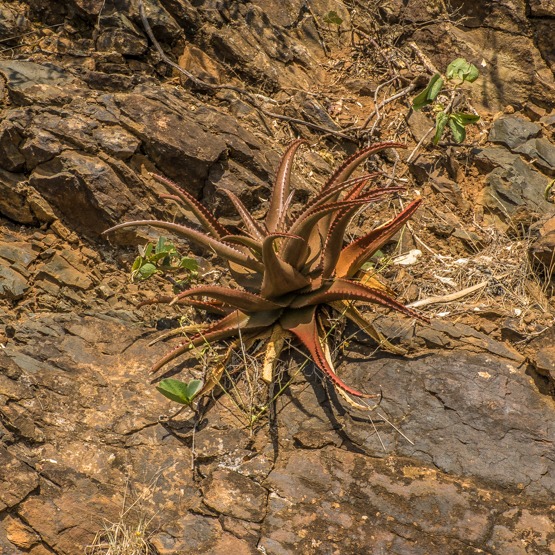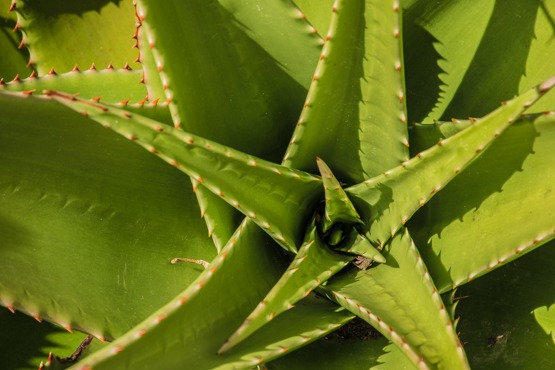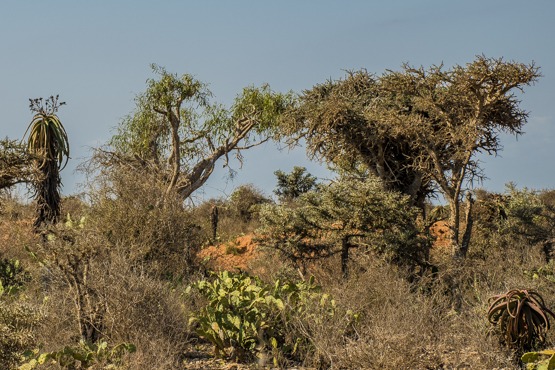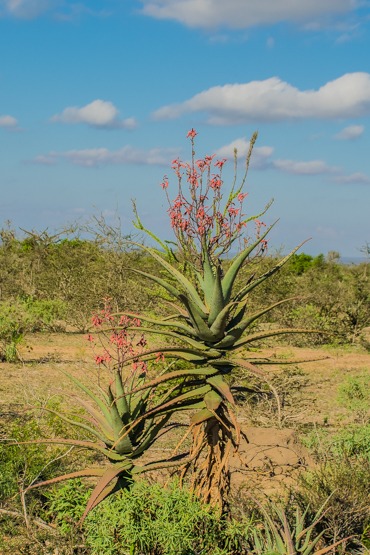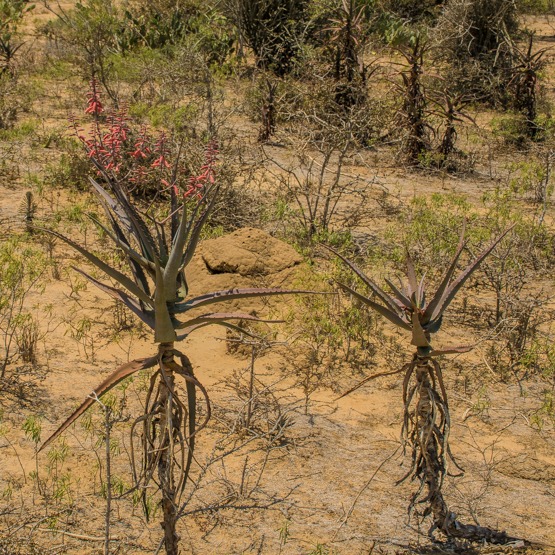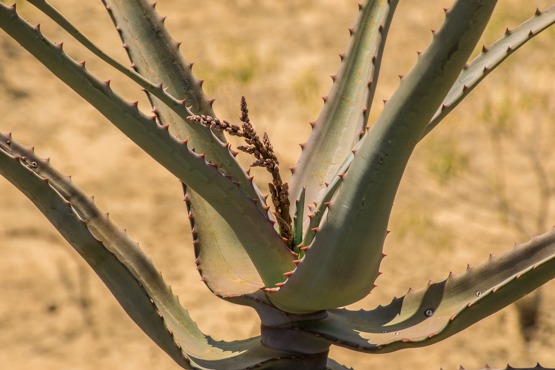From southern Ethiopia and South Sudan to Rwanda and Tanzania, this Aloe is widely distributed on sandy stony soils in grassland and open dry woodland. Sap from the leaves is used as an eye-lotion and the roots are used in beer-making.
The plants are single or form small groups; they are usually stemless, but older plants may have a short thick stem.
There are about 20 firm leaves in a compact rosette to 1 m. in diameter; they are 30-75 cm long and 15-30 cm wide near the base with marginal teeth (usually very sharp) and sometimes a horny rim; the colour varies from glossy dull green (covered with greyish-white to bluish-green bloom in the dry season) to darker green and bronzed.
The inflorescence is 1-2 m tall with 10-20 branches; the flowers are 2.5-3.5 cm long and may be bright coral-red, dull scarlet or pink with minute white spots.
